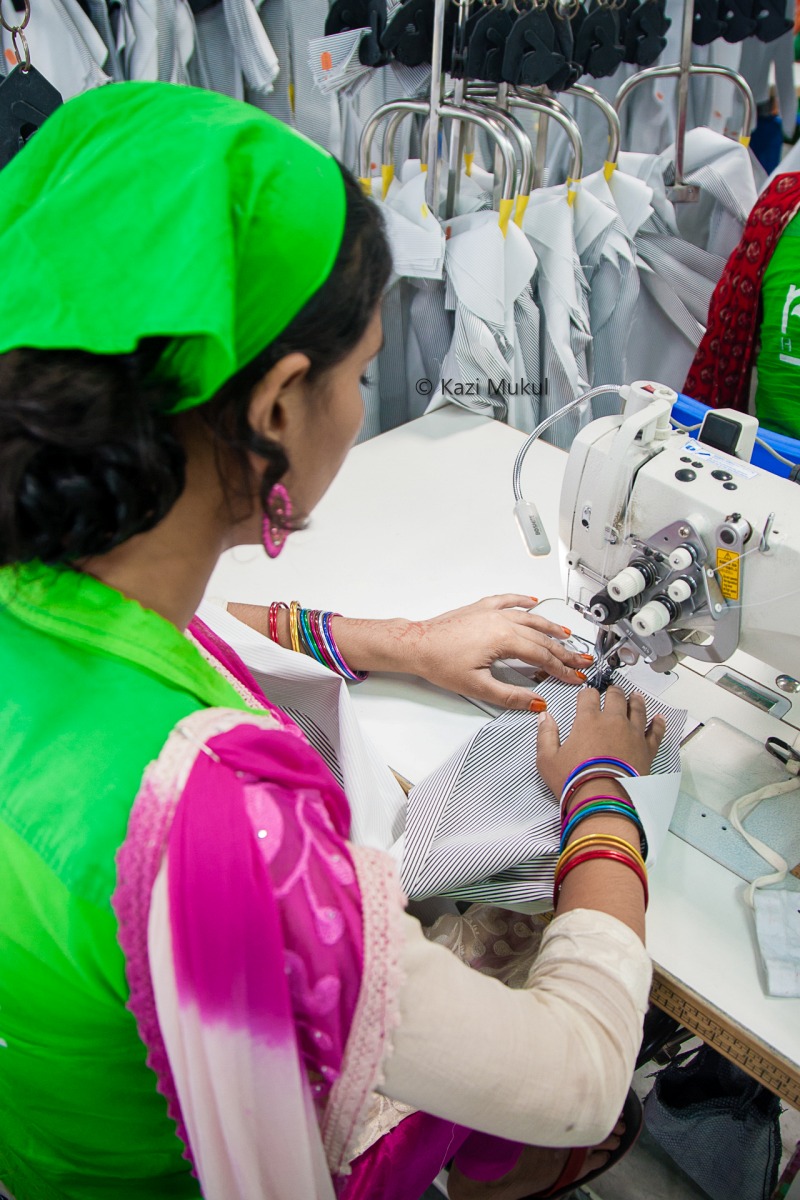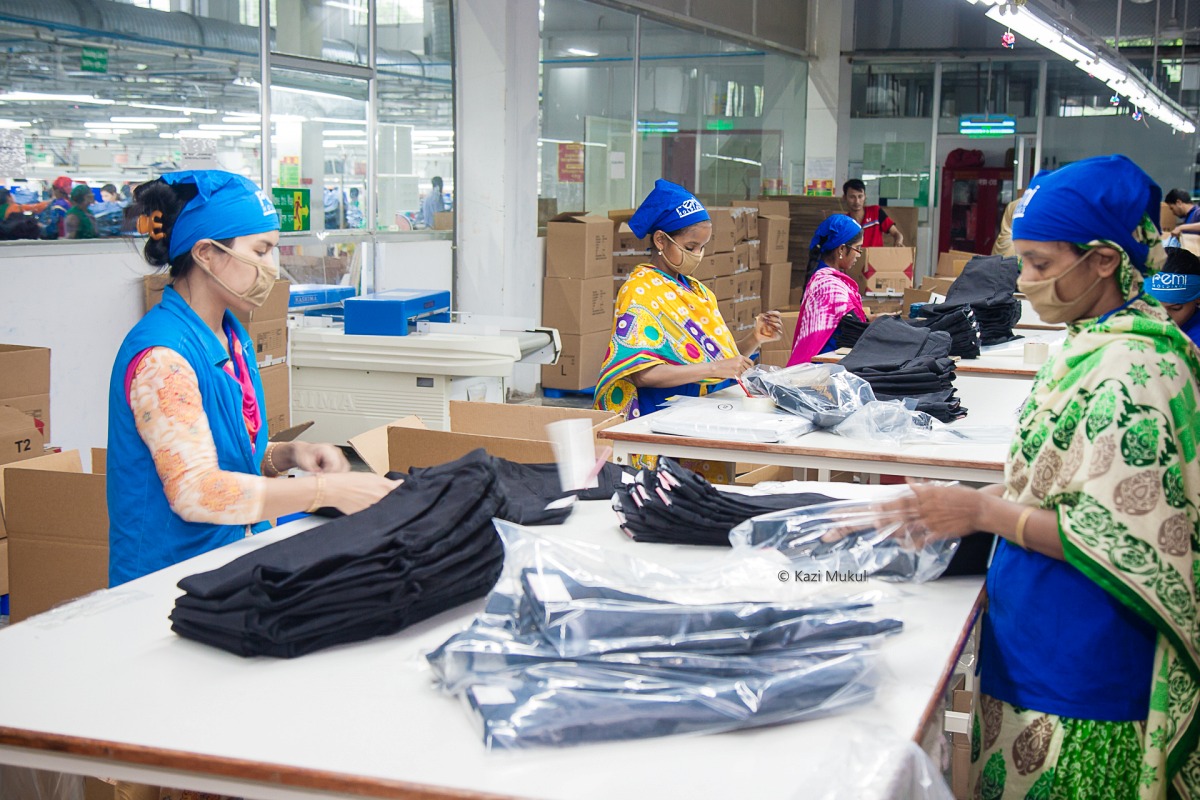
Bangladesh’s graduation from LDC status is, no doubt, a remarkable achievement, which would enhance the country’s image globally although some new challenges might arise. One such key challenge is that the country would lose preferential market access to some of its major export destinations including the European Union. Monira Munni writes on the pros and cons of LDC graduation and how this is going to impact our export earnings from RMG.

Categorized as a least developed country since 1975, Bangladesh has since 2018 acquired eligibility, measured based on three indices, namely GNI per capita, Human Asset Index (HAI) and Economic Vulnerability Index (EVI), for graduation from the LDC. It is scheduled to officially become a developing country in 2026 following the relevant UN committee’s recommendation for giving it five years instead of three, thanks to the impact of the Covid-19 on its economy, to prepare for the transition.
The country’ garment exports will decline by $4 billion a year if the country’s duty-free trade privilege in the European Union comes to an end following its graduation to a developing nation, according to Bangladesh Garment Manufacturers and Exporters Association (BGMEA). For Bangladesh, the readymade garment is the largest foreign currency earner that contributes about 83 per cent of the overall export earnings. If the preferences under European Union’s EBA (everything but arms) concession are not available, the exports of Bangladesh would face 8.7 per cent duty on average and an estimated 5.7 per cent shipments would drop a year. If Bangladesh can just avail of the Standard Generalised System of Preferences (GSP), it would lose $3.2 billion.
The EU offers Standard GSP for low and lower-middle-income countries meaning a partial or full removal of customs duties on two-thirds of tariff lines. More than 61 per cent or US$17.14 billion out of the country’s total $27.94 billion RMG exports went to the EU market in the last fiscal year, according to Export Promotion Bureau (EPB) data.

Currently, Bangladesh as an LDC enjoys duty-free, quota-free access for all products under its everything but arms (EBP) facility in the EU market. A BGMEA study says the country’s export to the EU will face the worst impact after graduation as the EU is the largest destination for locally made RMG items. Bangladesh’s export to the EU has grown by 9.03 per cent in the past 10 years to $17.15 billion. Currently, Bangladesh’s external trade valued at $25 billion, or 73 per cent is covered by duty-free access as an LDC, according to the study, which cautioned that that would come to an end once the LDC graduation takes effect. The significance of the EU market is demonstrated by the rise of its share in Bangladesh’s total exports that went up to 61 per cent from 58 per cent in the past decade.
On November 21, 2018, the European Union, based on its technical missions to Bangladesh, proposed the development of an Action Plan to further improve the labour rights situation in the country so that it can retain the existing trade facility and achieve the GSP+ status. Later, the EU and Bangladesh reached an agreement to develop a roadmap for addressing those issues. Apparel makers are of the views that while all competitors are offering further price discounts, any imposition of tariff on Bangladeshi goods may proportionately erode competitiveness. Bangladesh will have to negotiate strongly to meet the EU’s GSP eligibility criteria, according to them.
The GSP+ is a special incentive arrangement for sustainable development and good governance. It slashes tariffs to zero for vulnerable low and lower-middle-income countries. To be eligible for the EU’s GSP+ scheme is one way to ensure that the exports from Bangladesh to the EU do not suffer a major setback in the post-graduation period.
But gaining market access through the GSP+ scheme requires Bangladesh to comply with 27 international conventions – fifteen of which are related to human rights and the labour standards of the International Labor Organization (ILO). Bangladesh has ratified almost all major conventions except for a fundamental convention of the ILO’s Minimum Age Convention.
According to another study by the Center for Policy Dialogue, from 2016 to 2018, the utilization rate of EBA for Bangladesh has increased from 95.7 per cent to 96.8 per cent. It means that Bangladesh uses almost all of the eligible preferences under EBA, which is one of the highest utilization rates of EBA among all the beneficiary countries. The total imports of GSP eligible products into the EU shall have to be less than 7.4 per cent of the total imports of the bloc from all GSP beneficiary countries on an average during the past three consecutive years. The share of Bangladesh’s exports to the EU under the GSP facility was as high as 24.4 per cent in 2018.

Besides, the rules of origin under both Standard GSP and GSP+ require double transformation for textile and clothing items. Currently, Bangladesh enjoys single transformation, or one-stage work processing, i.e., fabric to garment. Bangladesh’s export competitiveness will be affected because the current subsidy program of the government may not continue in the post-LDC era.
The subsidy programs will have to be re-designed and re-purposed so that it fits in the post-LDC market access criteria and helps keep the industrial competitiveness and excellence in the country, according to the BGMEA study. It, however, suggested lobbying with the EU and initiating discussions with the European Commission for about a 7.4 per cent threshold for the GSP+ scheme. The EU is currently reviewing its GSP scheme for 2023, which will be finalized soon. According to experts, getting GSP+ would not be so easy because of the import threshold under EBA and the eradication of all form of child labour.
Bangladesh has already ratified the worst forms of child labour convention (CO 182) and through the 2018 amendment of labour law, employing children under the age of 12 in any factory or establishment has been prohibited and is a punishable offence. Complete elimination of child labour in order to move towards ratification of the Minimum Age Convention (CO 138) will be difficult due to the socio-economic conditions of Bangladesh, where many children work to earn a living for themselves and their families, they argued.
The main challenges related to the eradication of child labour that needs to be overcome, are that the Labour Act does not cover a large number of domestic workers in Bangladesh and child labour is one of the dominant forms in this area. Since the act does not cover domestic workers, it is impossible to bring domestic workers under scrutiny. Besides, Bangladesh Labour Act, 2006 and its amendments do not explicitly address the issues of violence against workers and workplace harassment.
According to the website of the EC, 15 countries have standard GSP status in the EU market, eight GSP+ status and 48 LDCs have EBA status.
The writer is the Senior Staff Reporter at the country’s premier financial daily, The Financial Express. She can be reached at [email protected]




